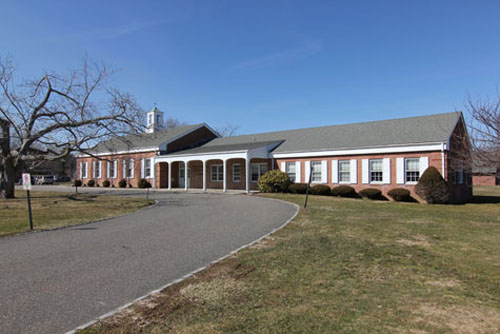‘Worst case’ budget plan on the table for Oysterponds

Oysterponds School Superintendent Richard Malone presented his “worst case scenario” budget for the 2013-14 school year Tuesday night, which involves combining grades and teacher layoffs.
During the school board’s budget workshop at the Orient school, Mr. Malone said he was asked by the board to prepare a “zero-based budget” to show how much it would cost to operate with bare minimum mandates. That process involves presenting a spending plan that includes only state-mandated programs.
Although preschool and kindergarten aren’t mandated, Mr. Malone said he included them because he believes the early childhood education programs are critical.
His $4.9 million draft budget reflects a nearly 10 percent reduction from the current $5.6 million spending plan, Mr. Malone said. Over the next few weeks, the board will hold additional budget workshops and seek input from the community as to which programs should be restored to the 2013-14 spending plan.
Due to the district’s dwindling enrollment, Mr. Malone said he’s recommending combining first and second grades, for a class of 18 to 20 students; third and fourth grades, yielding for a class of 17 students; and fifth and sixth grades, with a total of 19 students.
In December, Mr. Malone projected student enrollment will fall nearly 20 percent over the next five years. He estimated a drop in enrollment of 29 students between the 2013-14 and 2017-18 school years, from 162 students to 133, including those who have gone on to secondary school in Greenport.
Under Mr. Malone’s spending outline, the three combined classes would each have one full-time teacher and would share a reading specialist, math teacher and science teacher. He also included a teacher assistant, aide and special education instructors. That would result in the loss of the equivalent of four teachers, the superintendent said after the meeting.
He’s also recommending restructuring the pre-k and kindergarten programs. The class of five kindergartners would continue to start their day in the morning, but would be joined by the class of five preschoolers who arrive at the school in the afternoon. Staffing would involve a full-time kindergarten teacher and a teacher assistant for the combined preschool/kindergarten class, he said.
Although Mr. Malone said his overall model will provide enough support to give each student a “personal learning plan,” some parents criticized the proposal, fearing students would slip through the cracks in a larger class or fail to thrive in a combined grade setting.
Mr. Malone defended his recommendation and said the district’s size and resources provide an ideal environment for individualized teaching.
“We’ve got to think out of the box that because you’re a second-grader you only do second-grade work,” he said. “There are second-graders who can do fourth- and fifth-grade work. There are second-graders who might still have to do some review of first-grade work … We can no longer provide them with just the second-grade program. We’ve got to individualize it.”
The superintendent stressed that the combined grade model would be driven by enrollment and would vary from year to year.
School board president Dorothy-Dean Thomas said she plans to hold a meeting with the parents of children currently enrolled in the district’s combined first- and second-grade classroom to gain feedback about their experience.
In addition to discussing combining grades, Mr. Malone also gave a presentation about the school’s finances. Over half the district’s current $5.3 spending plan is allocated to benefits and teacher and staff salaries, he said, adding about 34 percent pays for secondary school tuition at Greenport. The remaining 15 percent supports the district’s pre-K through sixth-grade program, transportation, building maintenance, equipment and supplies.
Mr. Malone said his goal is to reduce salary and secondary tuition expenses to increase the funds available to develop future elementary programs, such as foreign language.
Oysterponds has been in negotiations with its teachers union to replace the contract that expired June 30, 2011. Since the district and the union have reached an impasse, the matter is being mediated through the state’s Public Employment Relations Board.
The district has also been ironing out a five-year tuition deal with Greenport. Earlier this month, Ms. Thomas said that even though the districts are close to finalizing an agreement, tuition will follow the Seneca Falls rate and, most likely, will do the same for the 2013-14 term. The Seneca Falls rate is a state formula that establishes the highest tuition rate a district can charge nonresident students. Last school year, Oysterponds paid about $14,000 per student and nearly $64,000 per special education student.
On Tuesday, Ms. Thomas and Mr. Malone said they are challenging how some components of the Seneca Falls rate are calculated because they believe the district is being overcharged.
In addition to reducing expenses, Mr. Malone said he has plans to increase revenue, such as soliciting the enrollment of out-of-district students who need of additional support and creating a shared service professional development program with neighboring districts.
Mr. Malone said other savings could be realized if Oysterponds either contracted out or shared with another districts certain personnel, such as an art teacher or speech therapist. He said contracted services will reduce costs because the district doesn’t have to pay benefits for those positions.
Hard copies of Mr. Malone’s presentation, stamped “draft,” are available at the school.
The next budget workshop on Tuesday, March 5, at 7 p.m. will include a presentation about the school’s Science, Technology, Engineering, Mathematics program, known as STEM.








